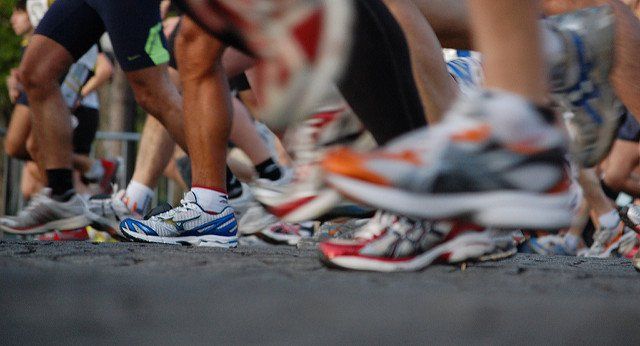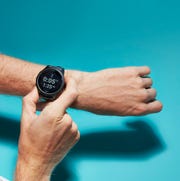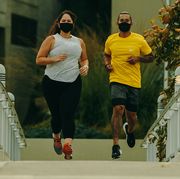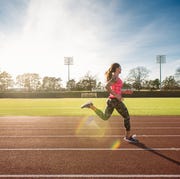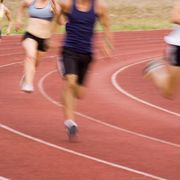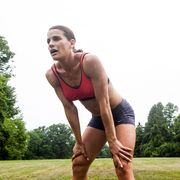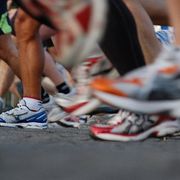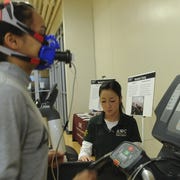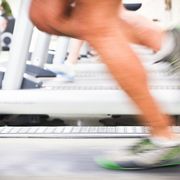Focus on the journey, not the destination—that’s pretty good advice for a lot of things in life, including health and fitness. After all, you’re unlikely to stick with an exercise routine if it’s not, at least on some level, enjoyable.
But the journey isn’t the only thing that matters. You have to be headed in the right direction. In this case, I’m thinking of exercise as the “journey,” and improved fitness—some quantifiable measure of cardiorespiratory capacity, like VO2 max—as the “destination.” People who exercise regularly tend to live longer, we know. And people with higher VO2 max tend to live longer too. Which is the key variable, and why?
That’s the question that a group of researchers led by Taryn Davidson of Queen’s University in Canada, along with colleagues from Stanford and Georgetown universities, tackled in research presented earlier this month at the American College of Sports Medicine conference in Denver.
The researchers examined the records of 11,610 male military veterans (average age 58.5) who had completed a VO2 max test at a Veterans Affairs Medical Center in either Washington or Palo Alto. During the same visit, the veterans filled out a questionnaire about their exercise habits. That data allowed the subjects to be classified as either “fit” or “unfit” based on their VO2 max tests, and “active” or “inactive” based on their exercise habits relative to the public health recommendations of 150 minutes of moderate or vigorous activity per week.
Over a follow-up period of about a decade on average, 2,876 of the veterans died.
RELATED: 1 Hour of Running Adds 7 Hours of Life
So what was the best predictor of who was most likely to stay alive? On the surface, exercise habits looked pretty good. After statistical adjustments to eliminate the effects of a range of other variables like age, BMI, smoking history, cholesterol levels, and so on, the active group had a “hazard ratio” (a measure of how likely they were to die during the study period) that was 17 percent lower than the inactive group.
In comparison, the fit group had a hazard ratio that was 12 percent lower than the unfit group—good, but not quite as good.
The problem, of course, is that fitness and activity are tightly intertwined. The most active people are generally, though not universally, the fittest. So what happens if you use further statistical adjustment to separate the two effects?
When you hold activity level constant, better fitness still independently predicted longevity: For each increase of 1 MET (more on that below), the hazard score dropped by 15 percent. In contrast, if you hold fitness level constant, there’s no further difference in longevity between the inactive and active groups.
RELATED: Ways to Avoid Sitting All Day
(A “MET” is a “metabolic equivalent of task,” and 1 MET is basically equivalent to your basal metabolic rate. In this study, METs are used as a way of quantifying maximum aerobic fitness. The dividing line between unfit and fit was 7 METs, which means that the average subject was burning seven times as much energy as at rest when he had to give up in the treadmill test to exhaustion. Roughly speaking, a healthy middle-aged adult might reach a maximum of 8-10 METs, while a marathon runner might get up to 18-24 METs.)
What this tells us is that exercise is good for you because it increases your cardiovascular fitness. High fitness, meanwhile, is good for you no matter how you acquire it—which is a lucky break for those who happen to have high levels of baseline fitness thanks to their genetics.
RELATED: Flex, bend, and stretch your way to injury-free running with the Runner’s World Yoga DVD.
It’s important to note that improved fitness isn’t the only way that exercise improves health. Exercise also has effects on body mass index, blood pressure, insulin sensitivity, and cholesterol levels, all of which can increase longevity, and all of which were held constant in this study’s statistical analysis. Regardless of what’s happening to your fitness, you’re likely getting health benefits from your workout routine.
Still, I see these results as a reminder to keep striving to push your limits back a little further. Getting exercise is good; getting fitter (and there’s no better rough-and-ready gauge of fitness than a race result) is even better.
Stuck behind a desk all day? You can do this quick mix of dynamic stretches and strength moves almost anywhere.
***
Discuss this post on the Sweat Science Facebook page or on Twitter, get the latest posts via email digest, and check out the Sweat Science book!
